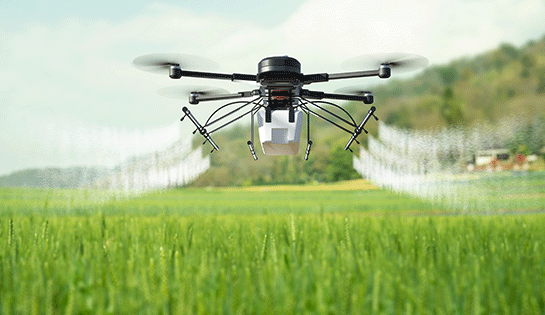Auburn, Alabama, has always been a critical player in agriculture. Farmers are constantly seeking new ways to increase efficiency while ensuring their crops are well-protected. One of the best methods that has come into the spotlight is aerial crop spraying. This technique allows farmers to give their crops the necessary nutrients and protection, and it has rapidly improved with the development of drone technology. Companies are at the forefront of this change, offering modern solutions for aerial spraying. As we explore this topic further, it’s clear how aerial crop spraying in Auburn, Alabama, is reshaping and advancing farming.
Precision Technology of Aerial Crop Spraying in Auburn, Alabama
One of the most significant innovations in aerial crop spraying is the use of precision technology. Today’s drones and aircraft are equipped with GPS systems that allow farmers to spray specific areas with pinpoint accuracy. This ensures that only the necessary areas are treated, reducing the waste of chemicals. Many well-known drone operators in this industry use advanced drones to offer farmers in Auburn highly precise applications. By doing so, they help reduce the amount of chemicals used, which is both environmentally friendly and cost-effective. When crops receive just the right amount of treatment, their growth improves, leading to better yields and overall performance.
Weather Considerations for Aerial Crop Spraying
The weather plays an obvious role in the success of aerial crop spraying. Several key aspects must be considered to ensure effective operations.
- Wind Speed Matters
Firstly, wind speed is a significant factor. Strong winds can blow the chemicals away from the targeted crops, which leads to poor coverage. Therefore, it’s ideal to spray when the wind is calm to make sure the chemicals hit the right spots.
- Temperature Fluctuations
Temperature fluctuations also matter. High temperatures can cause the chemicals to oxidize too quickly, reducing their effectiveness. This is why many farmers prefer to spray early in the morning or late in the evening when temperatures are lower.
- Humidity Levels
Additionally, humidity levels affect how well the spray works. If the air is too dry, the smaller droplets might evaporate before they even reach the crops. On the other hand, moderate humidity helps the droplets remain intact, making the spray more effective.
- Rainfall Forecasts
Rain forecasts must be checked carefully. Rain can rinse away the chemicals before they have a chance to work, so spraying during dry periods ensures that the treatments stay on the crops longer.
- Thermal Inversions
Lastly, thermal inversions can create challenges. Thermal inversions trap cooler air near the ground, preventing chemicals from settling evenly on the crops and causing them to linger in the air. Spraying when there are no thermal inversions helps to ensure better and more uniform coverage.
Cost-Effectiveness of Aerial Crop Spraying
Although aerial crop spraying might seem costly at first glance, it actually saves farmers a lot of money over time. The ability to apply treatments quickly, with minimal labor costs and precision in chemical use, all lead to significant savings. In Auburn, where agriculture is highly competitive, these savings can make a big difference in a farmer’s bottom line. Hinterland Drones offers aerial crop spraying solutions that are not only effective but also customizable. By tailoring their services to each farmer’s needs, they ensure that the farmers only pay for what they use, maximizing the return on investment.
Crop Spraying Drones Safety Protocols and Measures
Safety is a top concern when it comes to aerial crop spraying, and there are several important measures that must be followed.
- First, pre-flight equipment checks are critical. Farmers and operators need to make sure that drones or aircraft are in perfect working condition before each flight to avoid accidents and ensure smooth spraying operations.
- Second, proper handling of chemicals is essential. Operators must wear protective gear and follow all the recommended procedures for mixing and loading chemicals to prevent exposure.
- Third, operator and pilot training is very important. Regular training and certification programs help ensure that drone pilots and operators know the best practices for safe and effective spraying.
- Additionally, maintaining a safe distance from people, livestock, and populated areas is crucial. This reduces the risk of accidents or unintended exposure to chemicals.
- Finally, having an emergency response plan is a must. In case of unexpected situations like equipment failure or sudden weather changes, a quick response is necessary to prevent any damage and ensure the safety of everyone involved.
The Future of Aerial Crop Spraying in Auburn
As technology continues to improve, the future of aerial crop spraying in Auburn, Alabama, looks promising. We can expect aerial spraying to become even more efficient and environmentally friendly. Companies are leading this evolution, making sure that farmers in Auburn have access to the best tools available. These advances will help farmers achieve faster and more accurate crop spraying, improving yields and reducing costs. The focus on sustainability and technology means that the agricultural landscape in Auburn will continue to thrive, with aerial crop spraying playing a vital role in this progress.
Conclusion
In sum, aerial crop spraying in Auburn, Alabama, is revolutionizing the agricultural industry. With cutting-edge precision technology and cost-effective solutions, companies like Hinterland Drones are driving this change, making farming more sustainable and efficient. As drone technology continues to advance, Auburn’s farmers will enjoy the benefits of faster, more precise, and environmentally friendly spraying techniques. Ready to elevate your crop yields? Give Hinterland Drones a call — they’ll take your fields to new heights!


